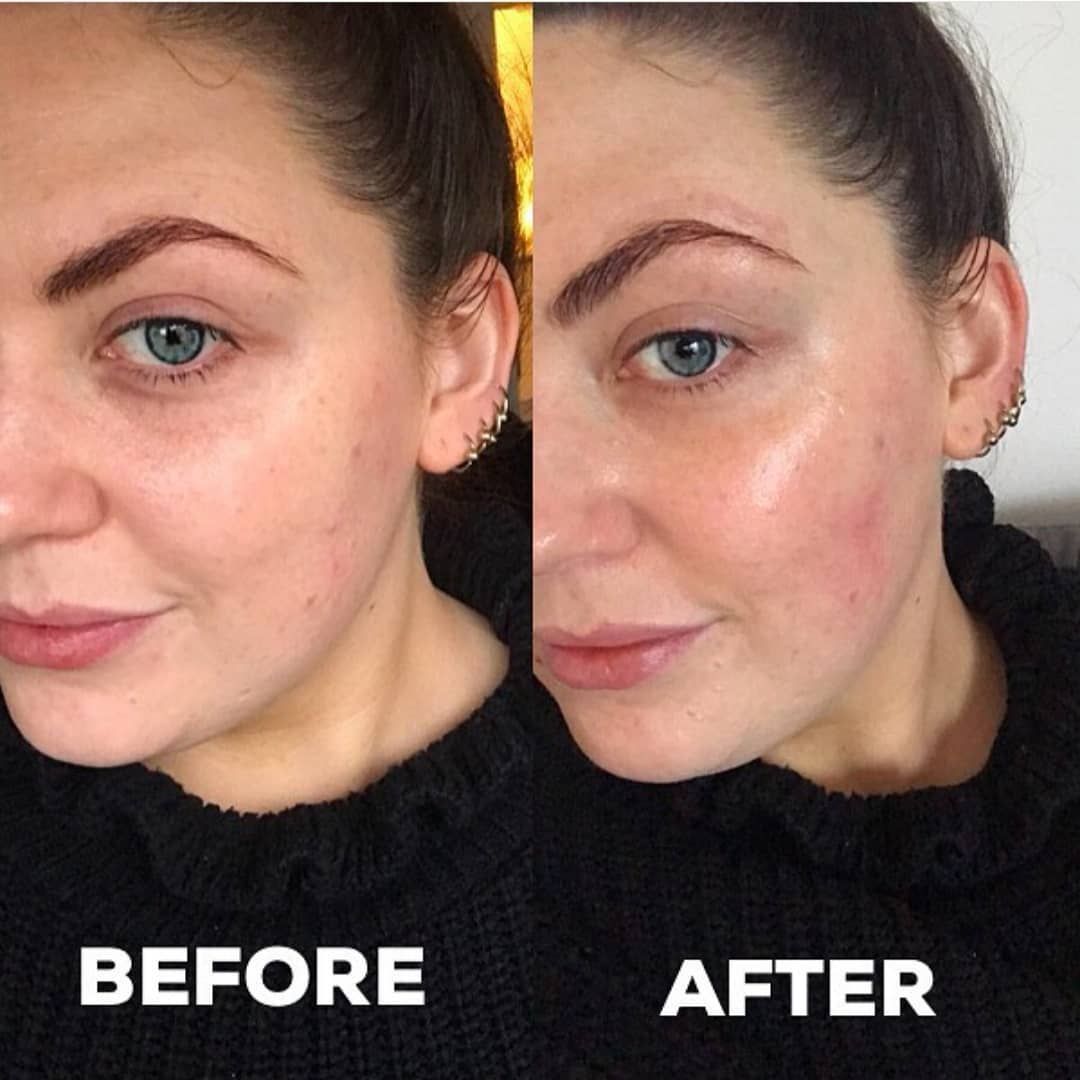This comprehensive guide explores the world of dermaplaning, unveiling its benefits, procedures, and potential outcomes, empowering you to make informed decisions about this popular skincare treatment.
Unveiling the Instant and Long-Term Effects of Dermaplaning
Dermaplaning offers both immediate and cumulative benefits. Understanding these can help you manage expectations and maximize your results.
The Immediate Glow-Up
Immediately following your dermaplaning session, you’ll likely notice a significant difference. Your skin will probably feel incredibly smooth due to the removal of peach fuzz and dead skin cells. This fresh skin may appear brighter, reflecting light more effectively. Pores can also seem smaller, leading to a refined appearance. Some individuals experience mild, temporary redness or slight swelling, which typically fades within a few hours.
The Long-Term Transformation
Regular dermaplaning sessions, much like a consistent workout routine, can yield impressive long-term improvements. Over time, you may notice a reduction in the appearance of acne scars and fine lines. This is likely due to increased cell turnover, promoting smoother, healthier skin. Your overall skin texture and tone can also improve, contributing to a radiant glow. Additionally, makeup application becomes smoother, resulting in a flawless finish.
Decoding the Dermaplaning Process
A typical dermaplaning session involves the following steps:
- Preparation: Your aesthetician will cleanse your skin and perform a brief examination to ensure your suitability for dermaplaning that day.
- Comfort Measures: A numbing cream may be applied, particularly for sensitive skin, to enhance comfort during the procedure.
- The Exfoliation: Using a sterile surgical blade, the aesthetician gently glides it across your skin at a precise angle, removing vellus hair (peach fuzz) and exfoliating dead skin cells.
- Post-Treatment Care: You’ll receive specific aftercare instructions, often involving avoiding harsh skincare products and sun exposure for a short period.
Weighing the Pros and Cons of Dermaplaning
Like any cosmetic procedure, dermaplaning has both advantages and disadvantages. Understanding these is crucial for making an informed decision.
| Pros | Cons |
|---|---|
| Brighter, smoother complexion | Potential for mild, temporary redness and swelling |
| Reduced appearance of acne scars and fine lines | Not suitable for everyone (e.g., active acne) |
| Enhanced product absorption | Requires professional treatment |
| Immediate, noticeable results | Sun sensitivity after treatment |
Nurturing Your Skin Post-Dermaplaning
After a dermaplaning session, your skin will be slightly more sensitive. Proper aftercare is essential for optimal healing and maintaining results.
- Sun Protection: Diligent sunscreen application is crucial, especially in the days following treatment.
- Gentle Skincare: Avoid harsh products, exfoliants, and retinoids for about a week to allow your skin to fully recover.
- Hydration: Use a gentle cleanser and a hydrating moisturizer to nourish and soothe your skin.
- Professional Guidance: Carefully follow your aesthetician’s specific aftercare instructions. Individual skin reactions can vary. Consulting a qualified skincare professional is recommended to determine if dermaplaning aligns with your specific skin concerns and goals.
Dermaplaning Results: How Long Until You See Smoother, Brighter Skin?
While you’ll likely feel smoother skin immediately after your dermaplaning session, peak results typically appear within 3-5 days. The full benefits become evident as your skin recovers and reveals the fresh, radiant layer underneath. These results usually last 3-4 weeks, coinciding with your skin’s natural 40-50 day regeneration cycle. Monthly treatments are often recommended to maintain the dermaplaned glow and avoid over-exfoliation.
Key Takeaways – Your Dermaplaning Timeline:
| What to Expect | When to Expect It |
|---|---|
| Initial smoothness and brightness | Immediately after treatment |
| Peak results, maximum glow | 3-5 days post-treatment |
| Results typically last | 3-4 weeks |
| Recommended treatment frequency for best results | Monthly |
While these timelines represent the typical experience, individual results can vary based on skin type, lifestyle, and environmental factors. Incorporating other skincare routines, such as moisturizing and sun protection, may prolong the effects of dermaplaning. Ongoing research continues to explore the long-term impacts of dermaplaning and its interaction with other skin treatments. Consulting with a dermatologist or licensed esthetician is always recommended for personalized advice.
Dermaplaning Dangers: Unveiling the Hidden Risks and Side Effects
While dermaplaning offers enticing benefits, it’s essential to be aware of the potential downsides.
One potential risk is skin irritation and redness, especially for those with sensitive skin. Breakouts are another concern, as dermaplaning could potentially spread bacteria if performed on active acne. While rare, infections are possible if sterilization protocols aren’t followed. It’s important to note that dermaplaning primarily addresses surface-level skin concerns and may not be as effective for deep wrinkles or scars. The cost of dermaplaning, combined with the need for repeat treatments, can also be a financial consideration.
| Potential Downside | Details |
|---|---|
| Skin Irritation and Redness | Can occur, especially on sensitive skin, usually temporary. |
| Breakouts and Infections | Possible if proper sterilization procedures aren’t followed or if used on active acne. |
| Uneven Skin Tone/Scarring | Rare but possible if performed incorrectly, emphasizing the need for a qualified professional. |
| Limited Effectiveness | Primarily removes surface-level skin; less effective for deep wrinkles or scars. |
| Cost and Maintenance | Can be expensive, requiring repeat treatments for upkeep. |
While dermaplaning can improve skin texture and product absorption, carefully weigh the potential risks. Individuals with sensitive skin, active acne, or certain skin conditions might explore alternative exfoliation methods. Research into the long-term effects of repeated dermaplaning is ongoing. Consulting a dermatologist or qualified skincare professional is always recommended.
Dermaplaning Peach Fuzz: Does it REALLY Grow Back Thicker? (And Other Myths Busted)
Yes, peach fuzz does grow back after dermaplaning. This is because dermaplaning trims the vellus hair at the surface without affecting the hair follicle, which determines hair thickness, color, and growth rate. Regrowth typically occurs within 3-4 weeks, but it will not be thicker or darker.
Dr. Baum from MSN confirms this, stating: “After dermaplaning, the fine vellus hair, commonly known as peach fuzz, will eventually grow back and typically feels the same as it did before the dermaplaning procedure.”
While the regrown hair might initially feel slightly blunt due to being cut straight across, this is temporary and softens as the hair grows. Gentle exfoliation can help minimize the appearance of regrowth between dermaplaning sessions.
Besides removing peach fuzz, dermaplaning also exfoliates dead skin, enhances product absorption, and creates a smoother surface for makeup application.
If you are experiencing uneven or bald spots in your beard, you should consider investing in a beard filler. It will give you the fuller and thicker beard that you have always wanted. It is perfect for improving the appearance of your beard, and it will help you to achieve the look that you desire. It is also worth discussing your specific goals with a professional, as there are many ways to improve your skin.
- Bento Box Glass Offers Practical, Eco-Friendly Meal Storage - December 16, 2025
- The Best Bento Box Price For Your Perfect Packed Lunch - December 15, 2025
- Bento Box Shopping Tips for Smart and Stylish Lunch Prep - December 14, 2025










